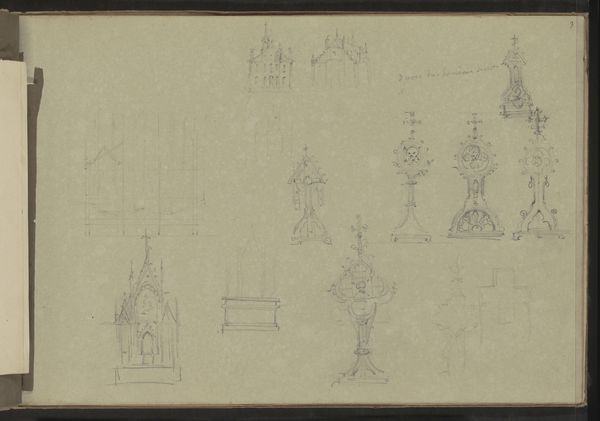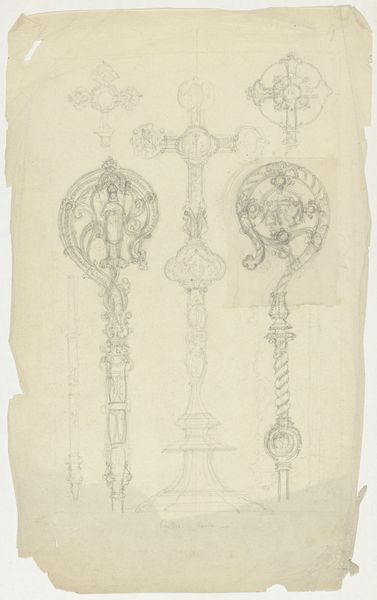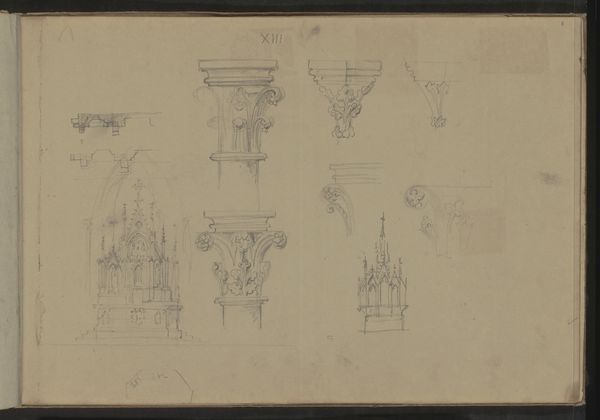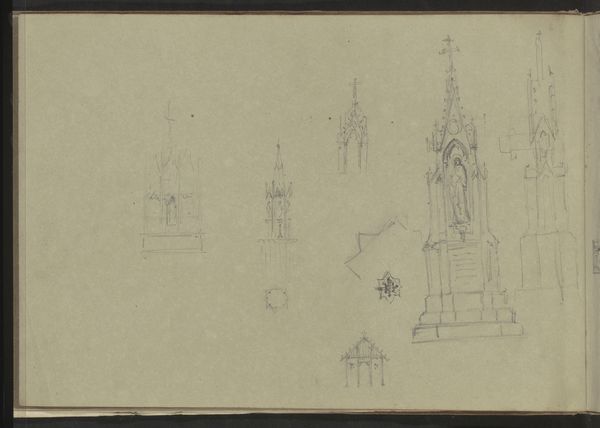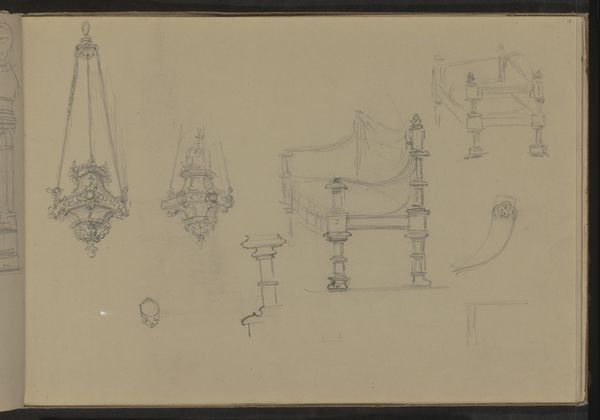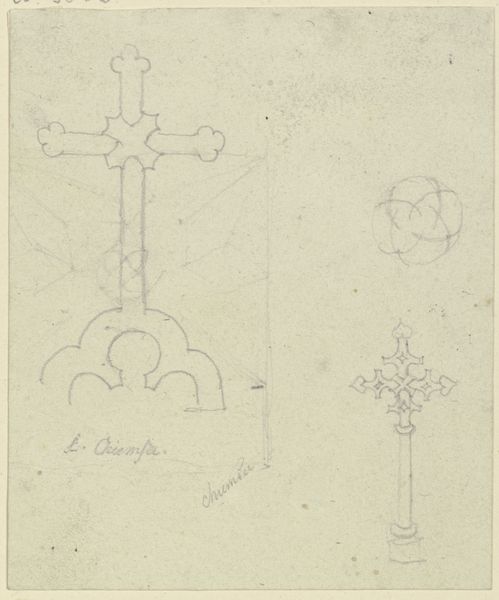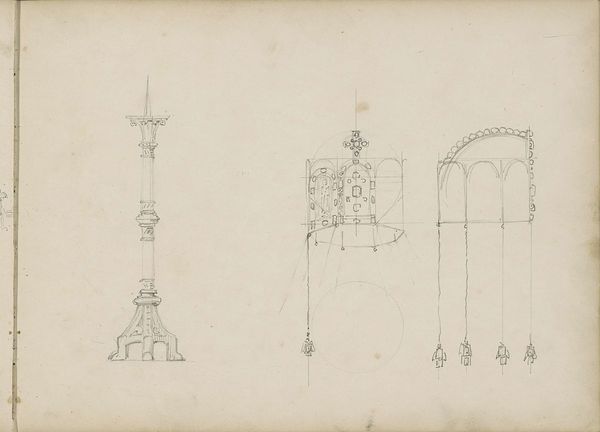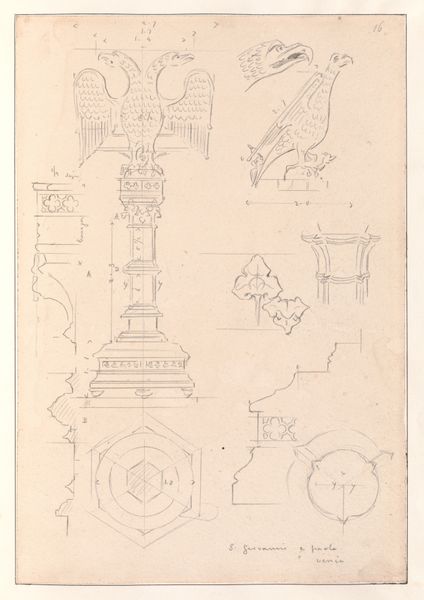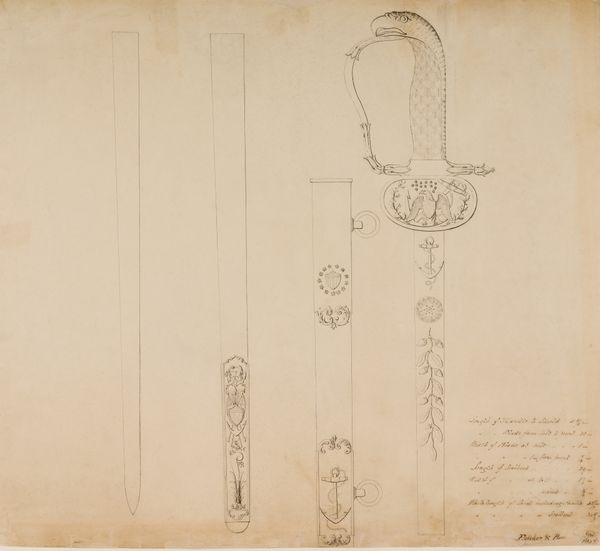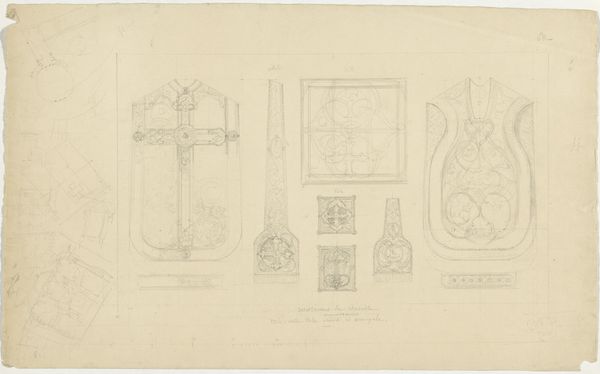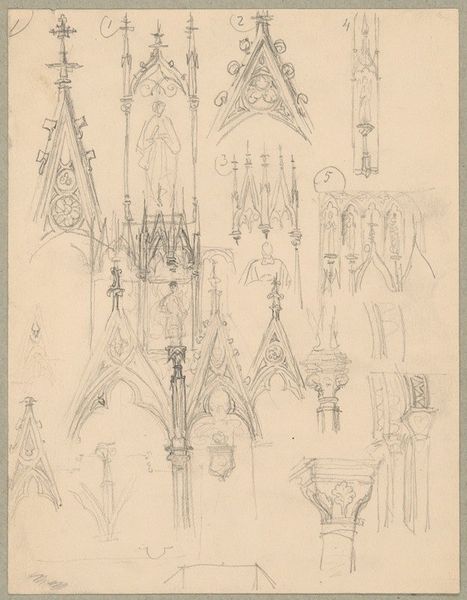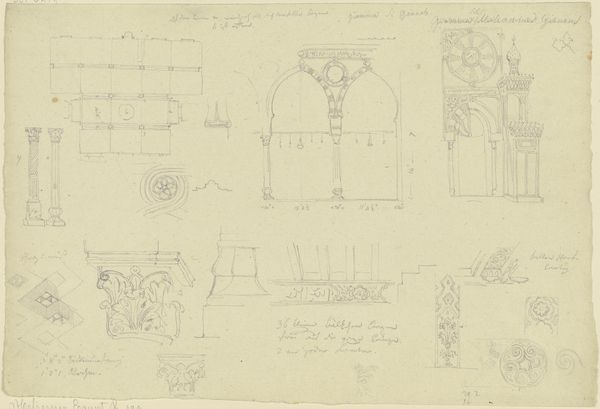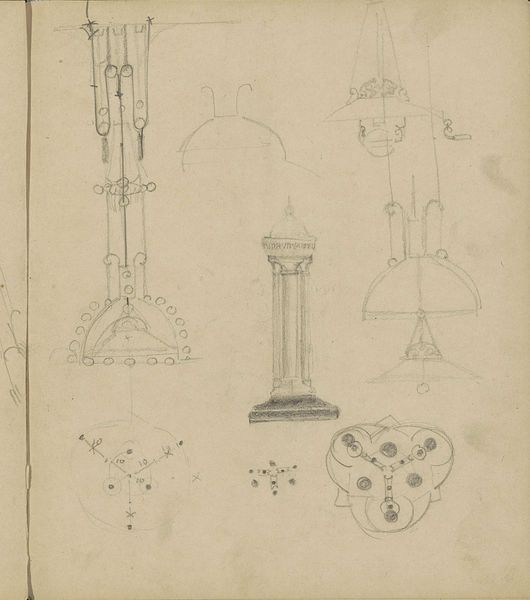
Studieblad, onder andere met een crucifix, ornamenten en wapens 1837 - 1921
0:00
0:00
drawing, pencil
#
drawing
#
aged paper
#
toned paper
#
medieval
#
sketch book
#
figuration
#
form
#
personal sketchbook
#
idea generation sketch
#
sketchwork
#
ink drawing experimentation
#
pencil
#
line
#
sketchbook drawing
#
storyboard and sketchbook work
#
sketchbook art
Copyright: Rijks Museum: Open Domain
Curator: Here we have a drawing titled "Studieblad, onder andere met een crucifix, ornamenten en wapens" which translates to "Study sheet, including a crucifix, ornaments and weapons." It is attributed to Pierre Joseph Hubert Cuypers, though created sometime between 1837 and 1921. It is held here at the Rijksmuseum. Editor: My first impression is that these skeletal drawings appear monastic, even restrained. There’s a purposeful austerity here despite the intricacy of the sketched forms. It seems less about devotional representation and more about the symbolic power latent in the iconography. Curator: I think that's insightful. Cuypers was deeply involved in the Gothic Revival movement, advocating for a return to medieval forms. These drawings were very likely preparatory studies, where he would investigate religious and heraldic symbols in connection to architecture, thinking about their significance, particularly with the symbols of power, faith and identity. The choice of toned paper enhances the sense of antiquity. Editor: Absolutely. Each sketch is like a memory fragment from illuminated manuscripts. Take the crucifix, for instance. It's stripped bare, its power derived solely from the instantly recognizable form and proportion. The crosses and shield designs echo both spiritual authority and perhaps more troubling associations with militarism or rigid hierarchies of power within European culture. I'm thinking about the rise of nationalism and colonialism that occured in parallel to the artist's life. Curator: I see your point, the shields and weaponry raise complex questions about nationhood and the role of the church during a time of shifting imperial landscapes. These were symbols invested with power and meaning far beyond their aesthetic qualities. Cuypers was designing in a time of societal flux when long standing sources of moral, cultural, and social authority were in a state of renegotiation and he seems to have been grappling with the aesthetic and historical baggage carried within those forms. Editor: Looking closer, there's a beauty in the spareness, in the artist distilling potent symbols down to their bare essence. For me, the emotional pull lies in the recognition of the weight each symbol carried then, and how much that weight still informs our world today. Curator: It's precisely through these material choices and thematic concentrations that we gain insight into the construction and enduring potency of religious and nationalist rhetoric. I appreciate your sharp insights. Editor: Likewise, it’s rewarding to consider the enduring legacy of symbols from your historical vantage.
Comments
No comments
Be the first to comment and join the conversation on the ultimate creative platform.
